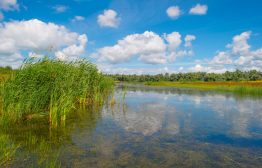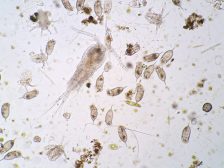Definition
noun, plural: hypertrichoses
An atypical hair growth in excess over the body
Supplement
Trichosis is an archaic term defined as a disease or abnormality characterized by an overgrowth of hair. The term hypertrichosis is the more widespread medical term used to refer to a condition characterized by an atypical growth of too much hair over the body. Hypertrichosis may be localized, i.e. the hair growth over a certain body part, and thus, is called localized hypertrichosis. An example is synophrys, which is a hypertrichosis in between the eyebrows. This condition gives an appearance of a single long eyebrow (or unibrow). When hypertrichosis involves the entire body the condition is referred to as generalized hypertrichosis, as in the case of werewolf syndrome (or terminal hypertrichosis).
Hypertrichosis may be congenital or later acquired in life. Congenital hypertrichosis is caused by genetic mutations. Examples of congenital hypertrichosis are as follows:
- congenital hypertrichosis lanuginosa (a condition wherein the lanugo hair remains after birth and may not be replaced by vellus hair even at adulthood)
- terminal hypertrichosis (a condition wherein the entire body is covered with fully pigmented terminal hair)
- circumscribed hypertrichosis (a condition marked by the presence of thick vellus hair on upper extremities, e.g. hairy elbow syndrome)
- nevoid hypertrichosis (congenital but may also occur later in life, a condition characterized by excessive terminal hair growing over an isolated body area)
Acquired hypertrichosis results from taking certain drugs or is associated with cancer. Examples include acquired hypertrichosis lanuginosa (characterized by lanugo hair growth especially on the face), acquired patterned hypertrichosis, and acquired localized hypertrichosis.
Word origin: hyper– (over) + trichosis, from Greek thrix (hair) –osis (condition)
See also:
- werewolf syndrome
- synophrys







